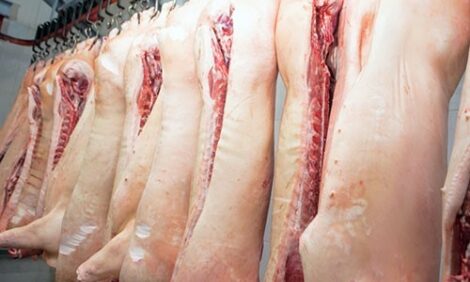



Testing Females to Improve Accuracy
UK - Over 1,000 female pigs annually are currently individually tested at nucleus level for feed intake, feed conversion and growth rate by the Yorkshire-based international pig-breeding company, ACMC.
With high-priced feed accounting for the major cost of production, it is important to test the females in all lines, as well as the males, since they contribute 50 per cent of the genetics to the next generation, says Ed Sutcliffe, the company’s geneticist and technical director.
Females in ACMC’s Vantage Ultra sire line are meticulously manually-fed with a known amount of feed, twice a day in special crates. Any feed not eaten is removed and weighed and deducted from the total feed consumed during the test period. Manual feeding 280 animals twice a day incurs an additional cost of 315,000 a year but Ed Sutcliffe has calculated that the greater accuracy of selection by individually testing females in addition to males, increases improvement in feed efficiency by around 60 per cent compared with not recording their feed intakes.

ACMC has been carrying out this form of testing for 10 years and he believes it is the only pig-breeding company to test females in this way.
"It is important to test the females in all lines — both male/sire lines and female/dam lines. Marker genes are useless if you have no accurate data to work out the effects of the markers in your populations. You need physical data before you can even thing about using genomics," he said. "Physical testing in a variety of environments is essential to ensure you get improvement that translates to commercial environments."








